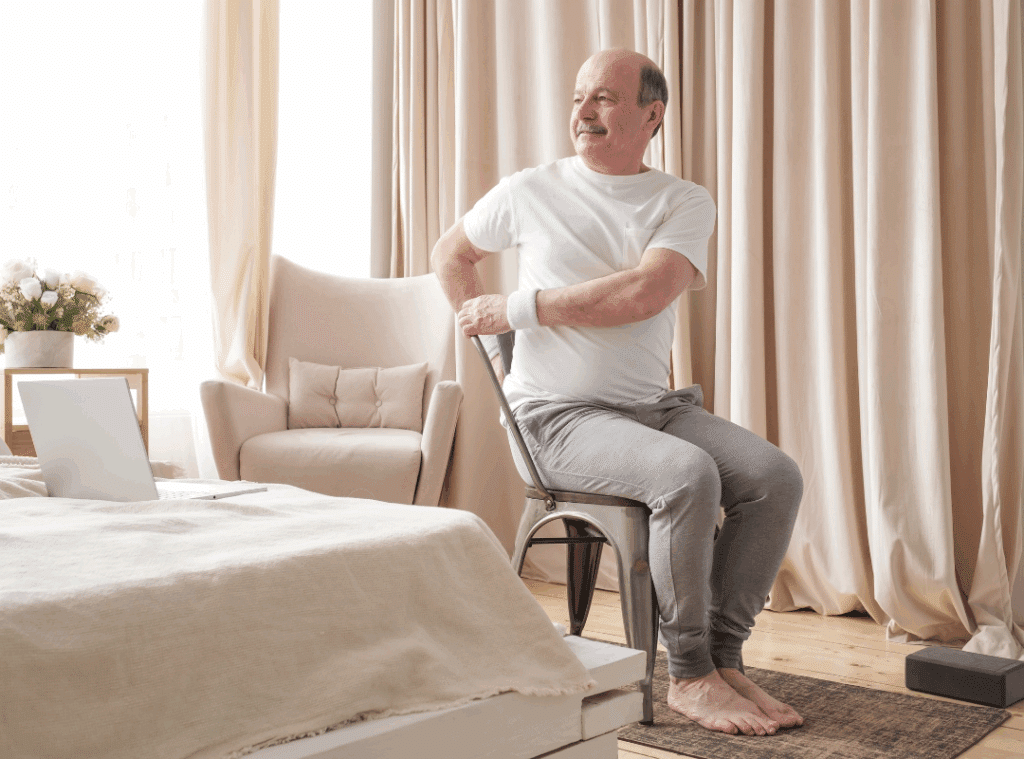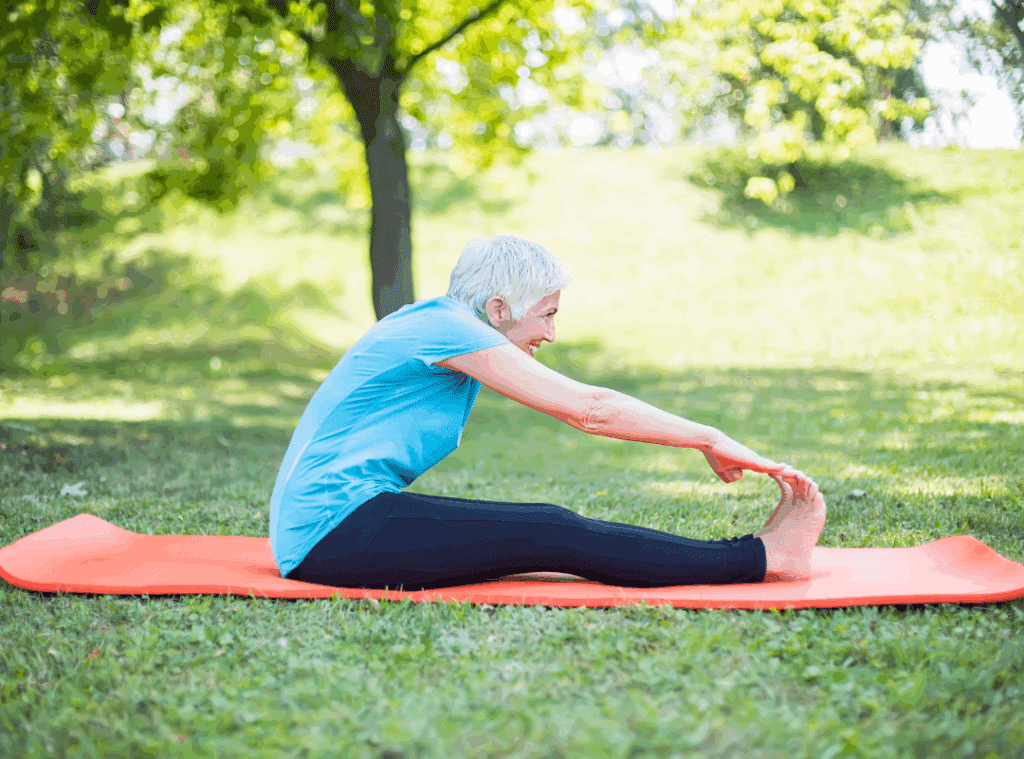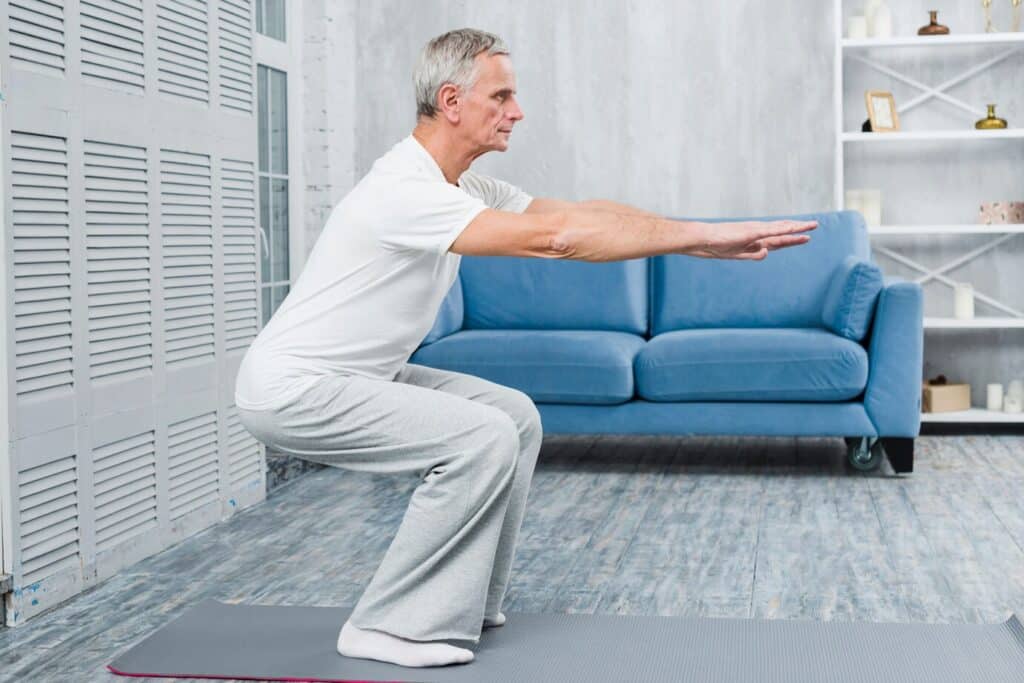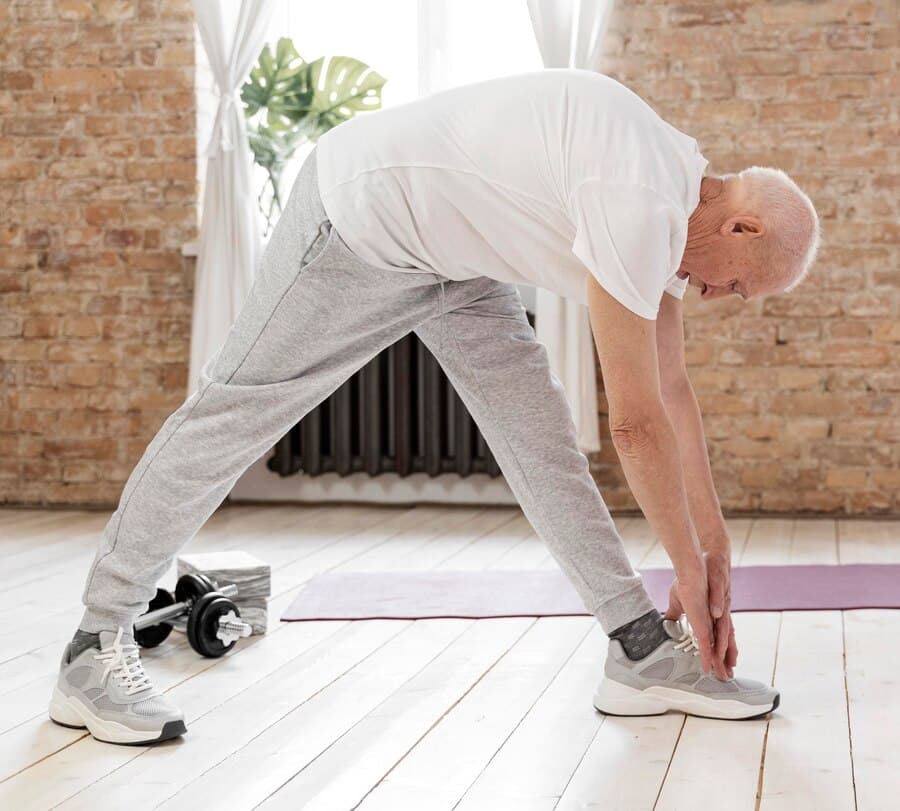As we grow older, it’s natural for our bodies to change, but what is the impact of age on flexibility? For many seniors, the gradual loss of range of motion and increased stiffness are more than just physical inconveniences. These changes can affect independence, daily function, and even emotional well-being.
At Westmont of Pinole, we understand how vital flexibility is for maintaining an active, fulfilling lifestyle. Through tailored programs and expert guidance, our senior living community helps residents stay mobile and independent. Learn how age affects flexibility—and what you can do to maintain or even improve it.
Visit Westmont of Pinole for more information on our wellness programs.
How the Aging Process Affects Flexibility
Age-related flexibility loss stems from a combination of muscle changes, biochemical shifts, and lifestyle habits. While natural aging plays a role, decreased physical activity is often the main contributor to stiffness.
At what age does flexibility start to diminish? Studies show that flexibility tends to decline around age 30, with more noticeable reductions after age 50. By age 65, many individuals experience loss of flexibility in their legs, reduced shoulder mobility, and stiffer joints.
This decline impacts daily activities like walking, climbing stairs, and reaching for items. Without intervention, flexibility loss increases the risk of injury and limits independence.
To preserve your mobility, it’s essential to stay active and engage in regular stretching routines. Learn how to maintain your flexibility through our gentle exercise programs.
The Science Behind Flexibility Loss
Several biological processes contribute to flexibility decline:
Biochemical Changes in the Body
Aging tissues undergo significant biochemical alterations. These include:
- Dehydration of muscle fibers leads to stiffness.
- Collagen cross-linking makes tissues less elastic.
- Reduced production of elastin, a protein vital for flexibility.
These changes directly affect mobility and posture. They also explain how flexibility is related to the likelihood of injury—tighter muscles are more prone to strain and damage. Combat these effects through hydration, proper nutrition, and consistent movement. For added support, explore how a balanced diet can enhance muscle health.
Extracellular Matrix and Muscle Stiffness
The extracellular matrix, a network of proteins that supports cells, becomes stiffer with age. This makes muscle tissue less pliable, increasing tension in tendons and ligaments. Additionally, sedentary behavior accelerates this process.
Incorporating leg exercises for seniors can minimize the loss of flexibility in the legs and promote circulation. Even small changes, like ankle circles and seated leg lifts, can make a big difference.
If you’re managing joint conditions like osteoporosis, read more on osteoporosis and hip pain.
Flexibility Training: Benefits for Seniors
Improving flexibility isn’t just for athletes. For older adults, flexibility training can:
- Increase range of motion
- Improve posture and alignment
- Reduce stiffness and pain
- Prevent injuries and falls
A good flexibility regimen empowers seniors to move more freely, boosting self-confidence and independence.
What Are Two Exercises That Someone Can Do to Improve Their Flexibility?
Great question! Here are two easy yet effective exercises:
- Seated Hamstring Stretch. Sit on a chair, extend one leg, and reach toward your toes. Hold for 20–30 seconds. This targets the hamstrings, helping reduce the loss of flexibility in the legs.
- Overhead Side Stretch. While standing or seated, raise one arm overhead and gently lean to the opposite side. This improves flexibility in the torso and back.
Try adding these stretches into your daily routine, or join a group stretching class for guided instruction and social engagement.

Flexibility and Injury Prevention
How is flexibility related to the likelihood of injury? Inflexible muscles and joints are more susceptible to strains, tears, and falls. When muscles can’t extend properly, they’re more likely to give out under stress.
Improving flexibility enhances joint function and coordination. It also improves balance, which significantly reduces fall risk—a major concern for aging adults. A flexible body reacts better to slips, missteps, or uneven surfaces.
Read more from Harvard Health about how stretching helps prevent injury and keeps your body limber.
The Role of Movement in Maintaining Flexibility
Consistency is key. Physical activity, even at low intensity, supports flexibility and muscle strength. Some ideal options include:
- Walking. Increases circulation and maintains leg flexibility
- Yoga. Improves flexibility, strength, and balance
- Tai Chi. Enhances joint mobility and reduces fall risk
Contrary to popular belief, flexibility can be improved at any age. A well-rounded fitness plan, including dynamic stretches and balance exercises, can lead to significant improvements.
At Westmont of Pinole, our wellness programming is designed to encourage these movements in a fun and engaging way.
Can Flexibility Improve With Age?
Yes! While the age when flexibility starts to diminish is a valid concern, the good news is that it’s never too late to regain flexibility.
Studies show that older adults can experience improved range of motion after consistent stretching for 6–8 weeks. Benefits include better posture, faster recovery, and less joint pain.
Flexibility also supports independence. Seniors with improved mobility report greater confidence in completing daily tasks like cooking, cleaning, and walking outdoors.
Here’s another great resource on stretching tips for seniors from the National Council on Aging.
Why Professional Support Matters
While self-directed stretching is effective, guidance from trained professionals can optimize results. At Westmont of Pinole, we:
- Provide personalized assessments of mobility
- Design custom flexibility routines
- Monitor progress to avoid overexertion
A structured plan makes it easier to stick with the program. Plus, our social and group-based fitness activities make the experience enjoyable and encouraging.
Making Flexibility a Lifestyle
Maintaining flexibility is about more than exercise—it’s a lifestyle commitment. Small choices each day, like stretching during commercial breaks or walking after dinner, lead to lasting results.
Encouraging a loved one to stay active or participate together can foster connection and motivation. Whether through community programs or at-home routines, the benefits are profound.
And remember, improving flexibility can start today—no matter your age.
Stay Limber, Stay Independent: Embrace Flexibility at Every Age
In conclusion, what is the impact of age on flexibility? It’s significant—but also manageable. With consistent stretching, guided movement, and support from professionals, older adults can regain mobility and protect themselves from injury.
By understanding how flexibility is related to the likelihood of injury, recognizing at what age flexibility starts to diminish, and implementing exercises that improve flexibility, seniors can continue living vibrant, active lives.
At Westmont of Pinole, we’re dedicated to helping residents stay strong, independent, and engaged. Visit our community at Westmont of Pinole, or call us at 510-758-1122.
Ready to take the next step? Schedule a Tour and discover how our programs support lasting mobility and wellness.
Discover the level of care you or your family member requires. What Level of Care Do You Need?
Frequently Asked Questions
What is the impact of age and flexibility?
As we age, our muscles lose elasticity, and joints may become stiffer, which reduces overall flexibility. This can make everyday movements—like bending, stretching, or turning—more difficult. Reduced flexibility may also affect posture, balance, and mobility, increasing the risk of falls or injuries. However, staying active with regular stretching or low-impact exercises can help preserve flexibility and improve joint health.
What is the impact of age on flexibility, Quizlet?
On Quizlet, educational resources typically describe that flexibility tends to decline with age due to changes in connective tissues and decreased activity levels. These changes can lead to reduced joint range of motion and tighter muscles. The platform may also highlight that regular physical activity, particularly stretching, can slow down this decline. It’s a helpful tool for students to understand the physiological basis behind flexibility loss.
What is the impact of age on flexibility, Brainly?
Brainly users often explain that aging causes muscles and tendons to lose elasticity, leading to decreased flexibility. They may also mention that the spine compresses and joints become less lubricated over time. As a result, older adults might experience stiffness, limited movement, or discomfort. Brainly answers typically encourage consistent physical activity to manage or minimize these effects.
How does age affect joint flexibility?
With age, the cartilage in joints wears down and synovial fluid production decreases, making movements stiffer and less fluid. Ligaments may also become less elastic, reducing the joint’s ability to move freely. This natural aging process can cause discomfort or limit the range of motion, especially in weight-bearing joints like the hips and knees. Regular stretching, strength training, and mobility exercises can help maintain joint flexibility as we grow older.








